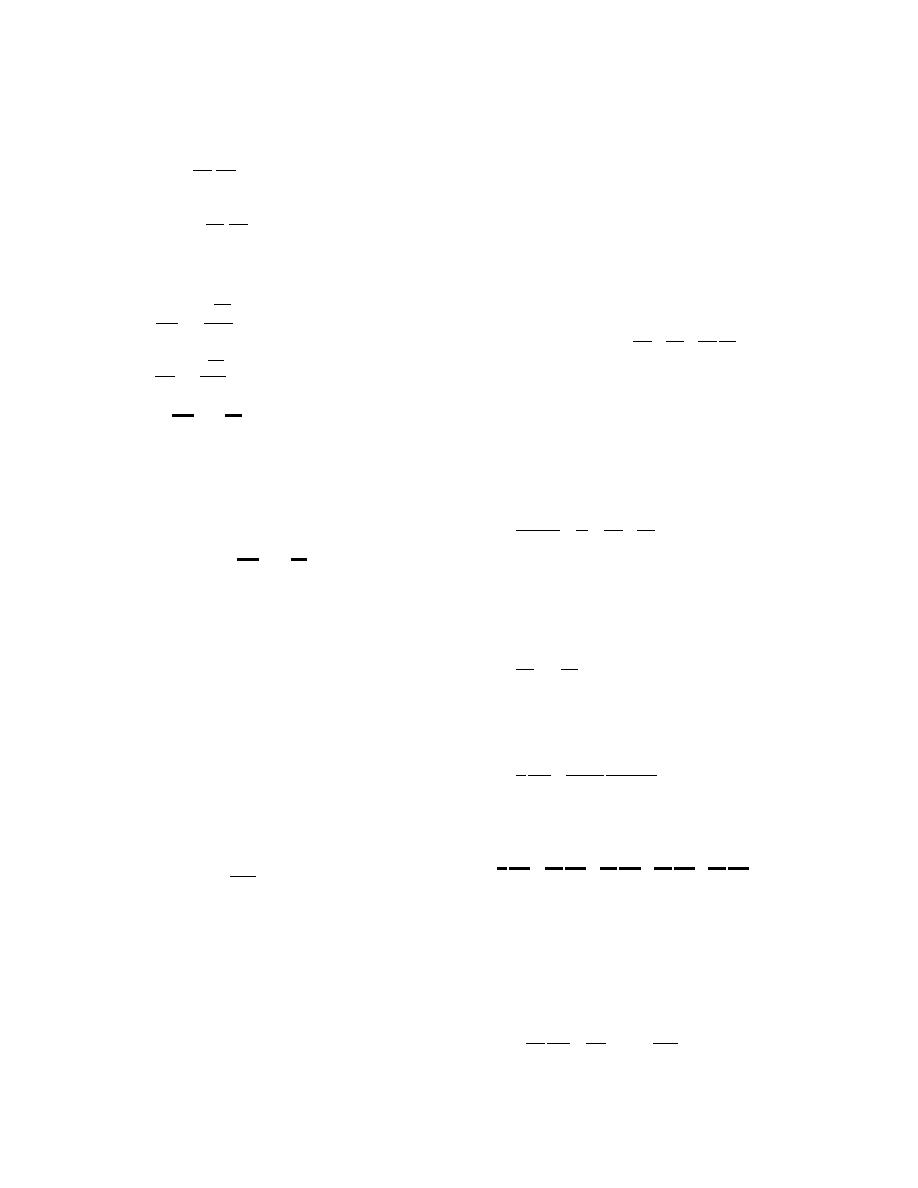
where T is the average air temperature. In eq 20, we
In eq 14a and b, it is common to substitute the geo-
strophic wind components Ug and Vg, defined as
also use the fact that the turbulent fluctuations in po-
tential temperature and in air temperature are virtually
P
1
fVg ≡
(15a)
identical. From eq 19b, 18, 9c and 20, we see that, to a
ρ0
x
good approximation
P
1
Tv = T (1 + 0.61Q)
- fUg ≡
.
(15b)
(21a)
ρ0
y
tv = θ(1 + 0.61Q) + 0.61T q.
(21b)
Thus, eq 14a and b become
Expanding eq 17, we get
(
)
U
uw
=-
+ f V - Vg
(16a)
ρ tv
ρ tv
t
z
P + p = R ρ0Tv 1 +
+
+
.
(22)
ρ0 Tv ρ0 Tv
(
)
V
vw
=-
- f U - Ug .
(16b)
On ignoring the fourth term on the right-hand side of
t
z
eq 22, because it is much smaller than the other terms,
The uw and vw terms in eq 16 really contain the
then averaging, we get the mean equation of state
essence of what we mean by an atmospheric boundary
P = R ρ0Tv .
layer. Without these terms, and assuming for the mo-
(23)
ment steady-state conditions, eq 16 would reduce to a
simple geostrophic balance characterized by two-
On subtracting this from eq 22, we find
dimensional flow. Such conditions are common in the
ρ tv
p
p
==
+ .
free atmosphere, but the ABL is by definition a turbu-
(24)
R ρ0Tv P ρ0 Tv
lent layer, and turbulence by definition is three-
dimensional. The uw and vw terms in eq 16, thus,
According to the Boussinesq approximations, however,
give the ABL its character.
the left side of this equation is negligible in compari-
For the atmosphere, the ideal gas law is the appro-
son to the right side. Consequently, the equation of state
priate equation of state (Lumley and Panofsky 1964, p.
for the fluctuating quantities is
214)
ρ
t
p = R ρ tv .
~~
~
=- v .
(17)
(25)
ρ0
Tv
Here R (= 287.056 J kg1 K1) is the universal gas con-
~
stant for dry air, and tv is the instantaneous virtual tem-
In eq 4, let us look at term III with this equation of
perature, a temperature that reflects the fact that the
state in mind. We have
presence of water vapor affects air density.
(P + p) .
As usual
~
1 p
1
=
(26)
ρ xi ρ0 + ρ
~
xi
tv = Tv + tv .
~
(18)
After some simple manipulations, this becomes
Lumley and Panofsky (1964, p. 213 f.) showed that
ρ P
ρ p
M
1 p
1 P
1 p
~
=
+
- 2
- 2
.
tv = ta 1 + a - 1 q
(27)
~
~
ρ xi ρ0 xi ρ0 xi ρ0 xi ρ0 xi
~
(19a)
~
Mw
= ta (1 + 0.61 q)
Again, the fourth term on the right is much smaller than
~
~
(19b)
the others; we ignore it. According to the Boussinesq
approximation, the density fluctuation in the third term
where Ma (= 28.9644 103 kg/mol) is the molecular
on the right is important only when it multiplies the
weight of dry air, and Mw (= 18.0160 103 kg/mol) is
acceleration of gravity. Thus, from eq 14c and 25, this
~
the molecular weight of water. Here, also, ta is the in-
term is
stantaneous air temperature
ρ P ρg
tg
-
=
δ i3 = - v δ i3.
(28)
ta = T + θ
~
ρ2 xi ρ0
(20)
Tv
0
4



 Previous Page
Previous Page
